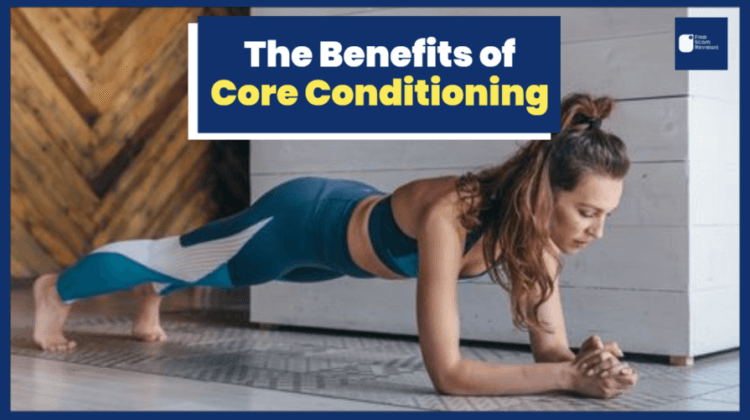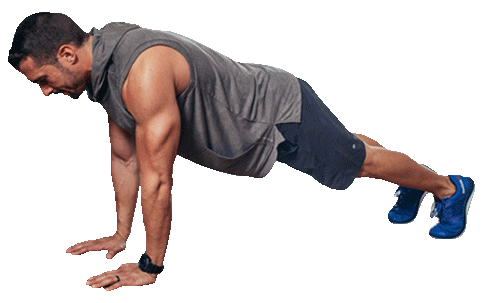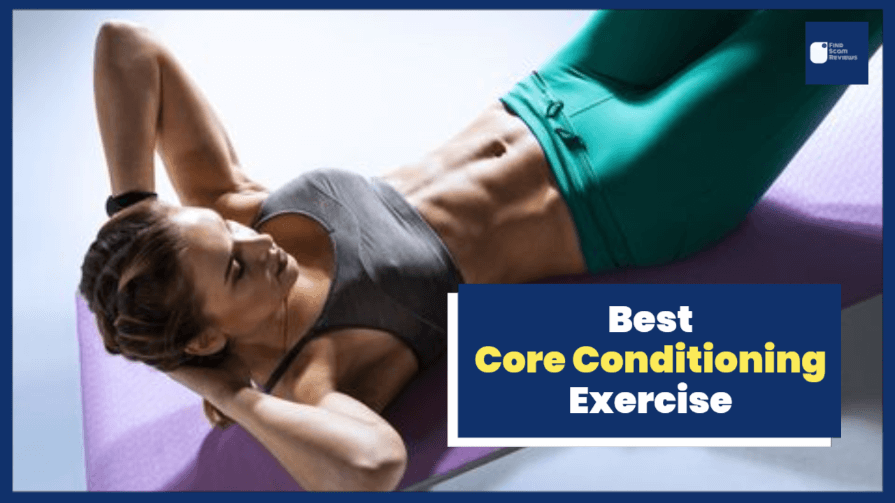
Core conditioning looks to improve: start doing it today
The Benefits of Core Conditioning: Why You Should Start Doing It Today
There are many benefits of core conditioning. It helps improve your posture, can relieve back pain, and can reduce your risk of injuries. It also helps improve your balance and coordination.
Core conditioning is an exercise that focuses on strengthening your abdominal muscles. These muscles form the foundation of your body and provide support for your spine. A strong core can help you move more efficiently and make everyday activities more accessible, such as carrying groceries or lifting a child.
Start doing core conditioning exercises today if you’re looking for a way to improve your overall health and well-being. You’ll be glad you did!

“A feeble body weakens the mind.” – Jean-Jacques Rousseau
What is core conditioning?
Core conditioning is physical training that focuses on strengthening the core muscles. The core muscles are the muscles of the abdomen, lower back, and hips. These muscles are essential for maintaining balance and stability and generating power during movements.
Core conditioning exercises can be done using various equipment, such as dumbbells, kettlebells, medicine balls, and resistance bands. These exercises can also be done using bodyweight only. Some examples of core conditioning exercises include planks, sit-ups, and crunches.
Core conditioning is a great place to start if you want to improve your physical fitness. Core conditioning is a great way to improve strength, stability, and power. It can also help to prevent injuries.
The benefits of core conditioning
There are many benefits to be gained from core conditioning exercises. A solid and stable core helps to protect the spine, improve balance and stability, and can even help to prevent lower back pain. Core conditioning exercises can also help to improve your posture and make everyday activities such as walking and sitting easier.
In addition to the physical benefits, core conditioning can also help to improve your mental well-being. A solid and stable core can help reduce stress and anxiety and improve your mood and energy levels. So if you’re looking for a way to boost your physical and mental health, core conditioning is a great place to start.
Best core conditioning exercise

There are a variety of different exercises that can be effective for core conditioning. Some of the most popular options include crunches, sit-ups, and planks. However, there is no single ‘best’ exercise for everyone. The best training for you will depend on your fitness level, goals, and preferences.
Some of the best exercises for core conditioning include planks, sit-ups, and Pilates. These exercises can help to improve your posture, balance, and flexibility. They can also help to tone your muscles and improve your cardiovascular health.
1) Planks
Various exercises can be used to condition the core, but the plank is one of the most effective. The plank is a simple yet challenging exercise that can be performed with little to no equipment.
There are many benefits to performing the plank exercise. It can improve muscular endurance, balance, and posture. It can also help to prevent injuries by strengthening the muscles that support the spine and hips.
If you are new to the plank exercise, start holding the position for 20-30 seconds. As you get stronger, you can increase the duration of the hold. You can also add variations to the exercise, such as raising one leg or arm off the ground.
2) Sit-ups
Sit-ups are a great way to strengthen your core muscles. They help tone your abs and improve your overall conditioning.
To do a sit-up:
- Start by lying on your back with your knees bent and your feet flat on the floor.
- Place your hands behind your head and slowly lift your torso off the floor.
- Keep your back straight, and your chin tucked down as you raise your body.
- Return to the starting position and repeat.
Sit-ups are simple exercises that you can do anywhere and are an effective way to improve your core strength. Be sure to mix your routine with other practices, such as push-ups, crunches, and planks, to keep your body healthy and strong.
3) Crunches
Crunches are a type of exercise that can help to strengthen and tone the muscles in your core. Core muscles include the muscles in your abdomen, lower back, and hips. Strong core muscles are essential for overall fitness and can help to prevent injuries.
There are many different ways to do crunches, and you can increase the difficulty of the exercise by holding a weight in your hands or using an exercise ball. You can also do crunches with your feet off the ground, which will help to work your lower abs.
To get the most out of this exercise, be sure to do a set of 10-15 repetitions. If you are starting, you can do this exercise every other day or 3-4 times per week. As you get stronger, you can increase the number of repetitions and sets that you do.
4) Pilates
Pilates is a great way to improve your core strength and stability. This can help to reduce back pain and improve your posture. Pilates can also help to improve your balance and coordination.
There are many different Pilates exercises that you can do to target your core muscles. Some practices focus on the deep abdominal muscles, while others target the lower back and hip muscles.
If you want to improve your core strength and stability, Pilates is a great option. There are many different exercises you can do to target other muscle groups. With regular practice, you can see significant improvements in your posture, balance, and coordination.
How to start core conditioning
There are a few things you need to know before starting core conditioning. First, you need to know what core conditioning is. Core conditioning is training that focuses on developing the core muscles, including the abdominal muscles, the lower back muscles, and the muscles around the pelvis. This training can help improve balance, posture, and stability.
Once you know what core conditioning is, you need to understand the benefits of this type of training. Core conditioning can help to improve your balance and posture, and it can also help to relieve lower back pain. In addition, core conditioning can help to improve your stability and prevent injuries.
Now that you know the basics, you’re ready to start your core conditioning program. Here are a few tips to get you started:
Start slowly
It’s important to ease into core conditioning exercises. Start with three sets of eight repetitions and tape this workout onto your bathroom mirror. Remember, if you can do more than eight repetitions without feeling the challenge, you must step it up by adding weight or trying a new exercise.
Focus on quality of movement
Don’t just go through the motions; focus on the mind-muscle connection and getting the most out of each repetition. Proper form will help ensure that you’re targeting your abdominal muscles and not other nearby muscle groups, such as your lower back or glutes.
Practice makes perfect, so be patient and give yourself time to get it right before moving forward with your routine.
Train consistently but strategically
Consistent training coupled with innovative program design is key to having a strong, defined midsection.
Your ab routine should be challenging enough to stimulate muscle growth but not so taxing that it exhausts your central nervous system or prevents you from returning to the gym for subsequent workouts during the week (lest you risk overtraining).
Stick with basic but effective movements for the first three weeks. After that, start throwing punchier moves into your program until you reach a state of significant fatigue.
Progress gradually
Start with lighter or more accessible versions of each exercise and gradually work your way up as you build strength and endurance. There’s no need to try and do too much too soon—trust me, you’ll only end up hurting yourself in the long run! When it comes to increasing the difficulty of your workouts, slower is always better.
Modify your movements
As you get stronger, you can increase the intensity of your workouts by modifying your movements. For example, if you’re doing crunches on a stability ball, try lifting your legs off the ground as you perform the crunch.
Get help from a professional
If you’re new to working out, getting started with a personal trainer or fitness coach who can design a workout program and help you troubleshoot any issues along the way may be helpful.
ALSO READ: How to Increase Brown Fat in Your Body Even When You Sleep
When exercising, you should
Exercising regularly has many benefits, including improved mental health, increased energy levels, and a reduced risk of developing chronic diseases. However, it is important to exercise safely and effectively to maximize these benefits.
Here are a few tips on how to do just that.
- First, consult a doctor before starting any new exercise routine, especially if you have any pre-existing medical conditions.
- Once you have the green light from a doctor, start slowly and gradually increasing the intensity and frequency of your workouts.
- Be sure to warm up before each workout and cool down afterward.
- Listen to your body and rest when you need to.
- Choose an activity that you enjoy and that fits your lifestyle.
Following these tips ensures you get the most out of your workouts and avoid injury.
Gradually increase the demands on your body.
One of the best ways to improve your fitness is to increase your body’s demands gradually. This can be done by increasing your workout intensity, duration, or frequency. For example, you might start walking for 30 minutes at a moderate pace three times per week.
Once your body adjusts to this activity level, you can increase the intensity by walking faster or adding hills to your route. You can also increase the duration by walking for extended periods or adding more days to your workout schedule.
Gradually increasing your body’s demands will help you improve your fitness level without overdoing it and risking injury.
Which of the following is a common myth associated with fitness?
There are many myths and misconceptions associated with fitness and exercise. Some people believe that you need to spend hours in the gym to see results, while others think you all need to do is eat less and move more.
The truth is that there is no one-size-fits-all approach to fitness and exercise. What works for one person may not work for another. The key is finding a strategy that works for you and that you can maintain long-term.
With that said, here are some common myths associated with fitness and exercise:
1) You need to spend hours in the gym to see results
This is not true. You can get fit and healthy by exercising for as little as 30 minutes daily.
2) All you need to do is eat less and move more
While eating less and moving more will certainly help you lose weight, it is not the only thing you need to do. Exercise is also vital for your overall health and well-being.
3) You need to exercise every day
You don’t necessarily need to exercise every day, but you should be active regularly. A good goal is 150 minutes of moderate-intensity aerobic activity per week.
4) You need to lift weights to get strong
This is another myth. While lifting weights can certainly help you build muscle, there are many other ways to get strong without lifting weights. Bodyweight exercises, for example, are a great way to build strength without using the equipment.
5) Cardio is the best way to lose weight
Cardio can undoubtedly help you lose weight, but it is not the only way. A combination of cardio and resistance training is often the most effective approach for weight loss.
6) Exercise is only for people already in shape
Exercise is for everyone, regardless of shape, size, or age. This could not be further from the truth! Being in good physical and mental condition will help you exercise and get fit faster, but even if you are starting from scratch or have some weight to lose – there is nothing better than a body that feels healthy and strong.
7) Exercise takes up too much time
This is another big misconception about fitness and exercise. While it takes some time to set aside for working out, many workouts are very efficient – getting your heart rate up without putting in too much effort. Remember that even 20 minutes of activity can make a big difference in health.
How does regular exercise help to reduce the effects of mental stress?
There is growing evidence that regular exercise can help reduce mental stress’s effects. Various studies have shown that exercise can help to improve mood, increase mental resilience, and reduce the risk of developing mental health problems.
Exercise works by releasing endorphins, natural hormones that have mood-boosting effects. Exercise also helps to reduce levels of the stress hormone cortisol. Cortisol is released in response to stress and can negatively affect mental health.
So if you’re feeling stressed, get some exercise into your routine. It could make a big difference to your mental health.
Which activity is an example of muscular strength
Many activities are examples of muscular strength. One example of muscular strength is the ability to lift heavy objects. Other examples include the ability to walk long distances and the ability to maintain good posture.
Muscle strength is the ability of your muscles to produce force. The amount of energy your muscles can produce is determined by several factors, including the size of your muscles, the amount of neural activation, and the type of muscle fibers you have.
Stress is considered good stress when
When we think of stress, it is often negative. We think of the deadlines at work, the upcoming test, or the bills we have to pay. However, pressure can also be positive. This is known as “eustress.”
Eustress is the type of stress that motivates us to do our best. It is the stress we feel when working towards a goal. This could be the stress of preparing for a big presentation or training for a marathon. While eustress can be challenging, it is also invigorating and can help us achieve our goals.
So the next time you feel stressed, remember that it is not always bad. Stress can be good for you, as long as it is the correct type of stress.
The most important types of exercises that build cardiorespiratory endurance are
Many types of exercises can help to build cardiorespiratory endurance, but some are more effective than others. Running, swimming, and biking are all excellent exercises for improving cardiorespiratory endurance, as they force the heart and lungs to work hard for an extended time.
Interval training involves alternating periods of intense activity with rest periods, which is also a great way to build cardiorespiratory endurance. This type of training helps the heart and lungs to become more efficient at using oxygen, which leads to improved endurance.
Finally, stair climbing is another excellent exercise for improving cardiorespiratory endurance. This exercise works the large muscles in the legs and requires the heart to pump hard to circulate blood throughout the body.
Specificity is essential to a fitness program because of it
A well-designed fitness program must be specific to the needs of the individual to be effective. The program must be tailored to the individual’s current fitness level, goals, and constraints.
Tracking progress and seeing results is much easier when a fitness program is specific. This is because particular goals are more likely to be achieved when the program is designed specifically for the individual. Additionally, a specific program is less likely to cause injuries as it will be tailored to the individual’s ability level.
The bottom line

Core conditioning is vital for overall health and fitness. Many different exercises can improve core strength, and it is crucial to find the right ones for your body. Try a few other activities and see which ones work best for you. With a strong core, you can improve your overall fitness and health.
